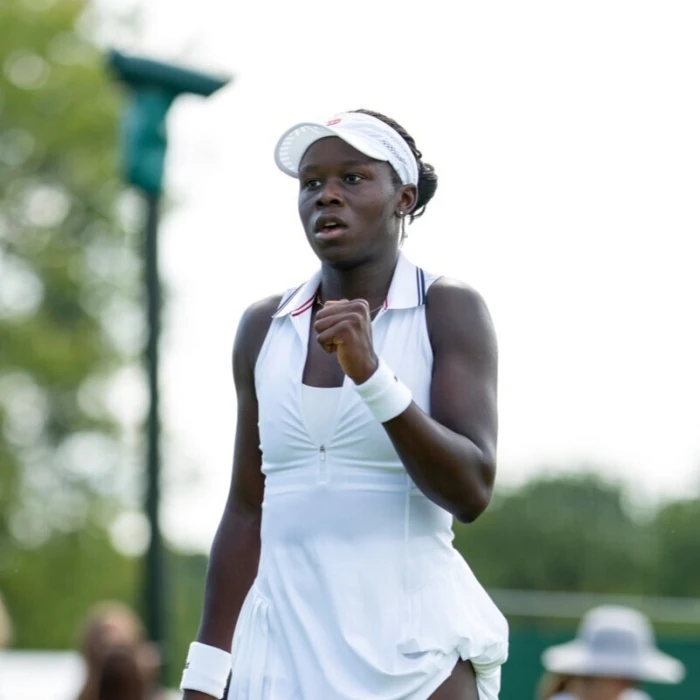Dianne Weatherby is Chair of the Board for the Ontario Tennis Association. Recently, she took the time to speak to Tennis Canada about how she got involved in tennis and where her journey in the sport has taken her, as well as the players that have inspired her, including a couple of Canadian superstars…
Growing up watching tennis on TV, Dianne Weatherby was very much a fan and not yet a player. In fact, it wasn’t until her late 30s that she picked up a racquet and began regularly hitting on the community tennis courts that backed onto her yard.
Once she caught the ‘tennis bug’, she couldn’t get enough and quickly became a member at her local club before joining its executive team as Social Director and taking over as President just a year later. “I’m passionate about giving back to the community, so it was an easy decision to become a tennis volunteer,” Dianne said.
Tasked with managing large-scale corporate events and member education services at a securities regulatory organization during her day job, Dianne describes herself as a “busy person”. That’s because she is also on the Board of Directors of YouthLink - a multi-service agency offering youth and family counselling, support, accommodation, education and community-based programs – all while performing her duties as Ontario Tennis Association (OTA) Chair of the Board.
In the 20 years since her involvement in tennis began, Dianne says she has seen increasing diversity at the clubs and events she attends. “Through the years I’ve noticed more and more people of colour at community clubs, including my own club, plus more have been attending the National Bank Open,” she commented. “People have figured out that tennis is not the elitest sport that it used to be, at least not in Canada. I am proof that tennis is an inclusive sport and no matter the colour of your skin you can learn, grow, and lead in the tennis community.”
From Althea Gibson and Arthur Ashe in the 1950s, 60s and 70s, Venus and Serena Williams’ rise in the 1990s and 2000s to Canada’s very own Leylah Annie Fernandez and Félix Auger-Aliassime, who are making their mark here and now, these are examples throughout tennis history of minority athletes enjoying ground-breaking success. And it’s been a joy to behold for Dianne.
“When Venus, and then Serena, came on the scene it was magical because I saw not one, but two young women with my skin colour playing on the world stage and it was inspiring,” she said. “It made me wish I had learned to play tennis as a child, and not in my late 30s. It’s a clear indication that tennis is becoming more diverse and inclusive, which is a testament to the great work being done at the provincial and national level to provide opportunities for everyone and anyone to participate, compete and improve at every level, regardless of their gender identity, race, or ethnicity. Leylah and Félix have bright futures ahead, as do our other amazing Canadian tennis stars and the juniors that are coming down the pipe.”
With 260 clubs and academies, representing over 85,000 adult and junior members, the OTA is the largest Provincial Tennis Association in Canada. Its three-year strategic plan includes several important programs that Dianne says “aim to encourage participation and increase access to tennis”. Their many initiatives include delivering and growing kids’ progressive tennis, making their dream of an OTA Tennis Centre a reality, as well as Club Strong, a program which provides clubs with the necessary tools to enhance their operations and run successfully.
Another key focus area is diverse and under-represented groups, including women and girls. In 2022, the OTA launched a women’s mentorship program, Passages, in partnership with Inspire Through Sport. Dianne explained: “The program brought 30 young women together in a collaborative environment to learn, grow, and lead, and they successfully completed either the Tennis Instructors Course or the Officiating Course. Our goal is to extend this program and find other ways to attract more people from diverse and under-represented communities to play and support tennis on a sustained basis.”
A member of the BIPOC community, Dianne is also the second woman in the OTA’s 103-year history to serve as Chair of the Board. Just as she and many others have been inspired by the incredible success of women athletes on the court, she hopes to provide encouragement to others by succeeding in her role.
“Throughout my life I’ve had the good fortune of meeting some exceptional role models and mentors,” she said. “They have helped shape me into the woman I am today, and I hope young women will see me as a role model and source of inspiration.”






